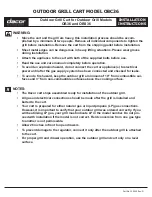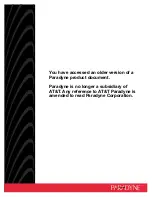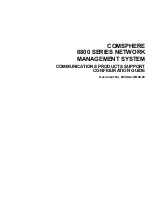
13
Transmission Interval: The Transmission Interval is the time between
transmissions of measured data. The factory default is 8 hours. That means the
sensor will “wake up” and make a measurement every 8 hours (3 times per day).
At the default 8-hour transmission interval, the primary lithium-thionyl chloride
(Li-SOCl
2
) batteries are expected to last in excess of 5 years.
Note
: Decreasing the transmission interval (i.e., increasing the number of
measurements per day) will not only reduce battery life but will also use more
receiver bandwidth. Thus, fewer sensors can be used with a receiver. See the
Echo
®
Receiver User’s Manual
for guidelines regarding the number of sensors
that can be used per receiver.
RVL (Residual Vibration Level): The RVL is an rms velocity level in ips
(inches/second). If it is set to 0 (zero), the feature is off and the sensor will wake
up at the programmed interval, make measurements, and transmit them. If a value
is set, the sensor will wake up at the programmed interval and start a
measurement. If the rms velocity is ≥ the RVL, the measurement and transmission
will proceed as normal. If the rms velocity is < the RVL, the machine is assumed
to be off and the measurement is terminated. This both conserves battery power
and minimizes the transmission of “bad data”.
CF Report Threshold: CF (crest factor) is the ratio of true peak acceleration
divided by rms acceleration. For a sine wave, this value is 1.414. Echo
®
sensors
high pass filter both the true peak and rms acceleration measurements for better
HFE (high frequency energy) response. This type of filtered measurement
generally provides an earlier warning of bearing, gear, and other high frequency
faults. It can also result in very low rms acceleration readings (sometimes in the
noise) for healthy machines, particularly if they operate at slow speeds. The CF
Report Threshold value is a minimum rms acceleration level at which CF will be
computed. If the rms acceleration is below this value, CF is returned as zero.
Transmission Power: The Echo
®
Wireless Vibration Sensor transmits at 0.75 mW
ERP (Effective Radiated Power). In some cases, the sensor may be so close to the
antenna and the signal strength so strong, that the receiver will see “reflections” of
the transmitted signal. While this does not affect data accuracy, it can use
unnecessary receiver bandwidth to deal with the reflections. If the received signal
from a sensor is > 65 dB, the Transmission Power should be changed from High
to Low to eliminate this problem. This will cause the transmitted power to be
reduced by about 45 dB.
Transmission Band: The Echo
®
System can operate on 12 independent user
selectable RF bands. Sensors will only communicate with receivers that are set to
the same band that they are set to. This allows for large installations requiring
hundreds or thousands of sensors and in cases where distances are too far to be
picked up by a single antenna location.








































